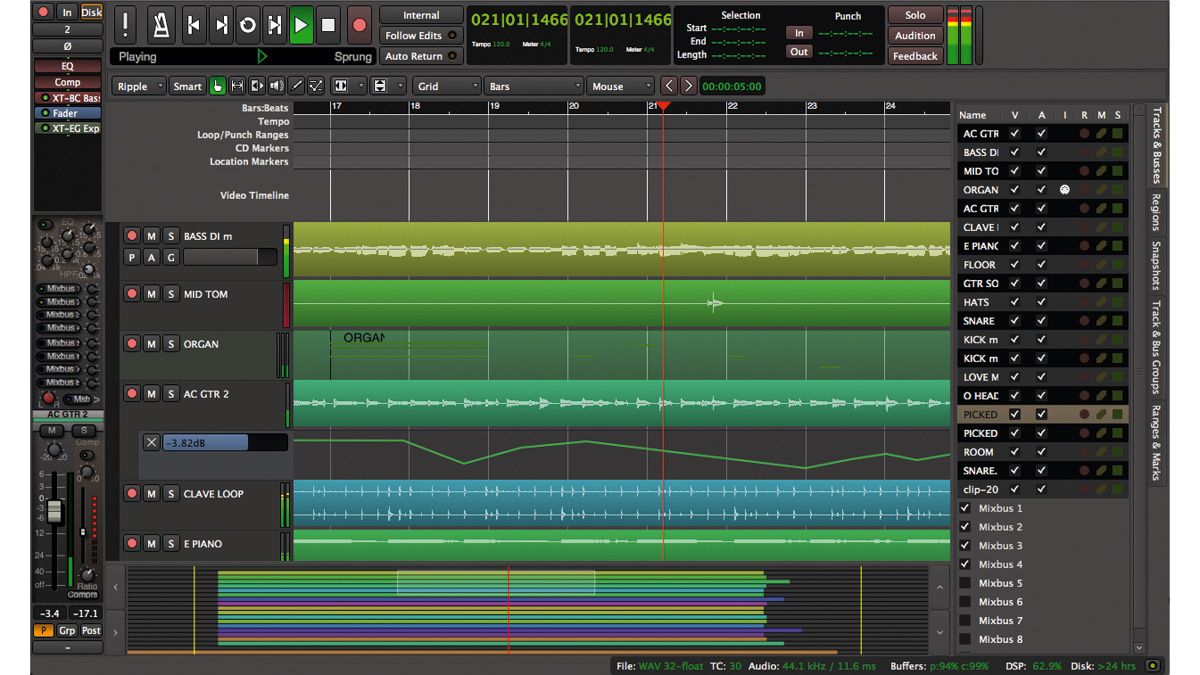Take your Audio Mixing to the next level with Mixbus and Mixbus32C, plugins, templates, and add-ons. Browse our audio recording software, Digital Consoles and Analog Consoles. Mixbus is a customised Mac OS X version of the open‑source program Ardour (which, unlike Mixbus, is also available for the Linux platform). Broadly speaking, it combines the existing Ardour recording and mixing functionality with a custom mixer. Mixbus with Kevin Paul is a series of podcasts featuring some of the best Producers, Songwriters, Mixers and Engineers in the world talking informally about their career and their approach to music. You can listen to the podcasts using the player below, on Podbean or through your favourite podcast app on iPhone and Android.
We've got your guide to everything mix bus-related. Learn how they work, the difference between a group, aux bus, or master bus, when you should route your tracks to a group bus, and how to do it the right way.

What is a mix bus?
Every single mixing board, whether physical or digital in your DAW, performs exactly the same task—it takes multiple signals from different channels, combines them together, and routes that blend of tracks to an output of your choice. A mix bus (also spelled mixbus) is where all those combined tracks are routed and merged together so you can take collective action on them.
What is a master bus?
Mixbus32c
The most popular mix bus is the basic main stereo mix bus (also called the 'master bus'). You'll find it on every single mixing console (usually as the last channel on the right side). To put it in simple terms, the mixing board takes all of the different instrument channels and combines them into a single pair of Left and Right channels. Those channels are then output to your Left and Right speakers or headphones.
The main stereo mix bus acts as your master control center, where you can make final adjustments before the audio leaves your board (or your DAW) and hits the speakers. At the very least, the main stereo mix bus will allow you to control the volume of all the combined tracks (useful if you want to create a fade-out or make everything louder/softer). Most mixers will also let you add different insert effects (like iZotope's mix assistive plug-in Neutron 3) to the main stereo mix bus, to make your songs sound incredible.
The main stereo mix bus isn't the only mix bus you can create in your audio flow, however. There are two other types of mix buses that can significantly help in your mixing process: subgroups and aux tracks.
What is a subgroup versus a bus?
Here's one of the simplest ways to explain subgroups and busses: Imagine you're a teacher in charge of 60 kids. For a field trip, you hand each child a T-shirt with a specific color, which puts them in color groups (green, red, and blue). The principal gave you a list, which specifies the T-shirt color that every student is supposed to receive.
From here, there are options. You can read down the list, check the T-shirt color, grab that color from the appropriate bin, and hand it to the student. So, 'Jimmy, blue,' get a blue shirt, find Jimmy, and give him his T-shirt. 'Alissa, green,' get a green shirt, find Alissa, and give her her T-shirt, and so on with 60 students. Needless to say, that's a lot of work and would take a lot of time.

Thankfully there's an easier way. You could group the kids by T-shirt color and have them board separate buses. Meaning, you could read off all the names of the kids that need green T-shirts and have them all get on the same bus (we'll call it the green bus). Then have all the 'blue' kids board the second bus and the 'red' kids the third. Then, all you would have to do is get on each bus with the appropriate bin of colored T-shirts and hand them out to all the kids on board.
A subgroup mix bus is just that: a group of tracks controlled as a single group. Imagine you want to add distortion to 10 background vocal tracks. You could do this track-by-track, or route all the background vocal channels to a bus.
In doing so, you mix down all 10 tracks into one stereo channel (let's name it “BG Vocals”). This bus would, in turn, output to the “Master Bus.” Add your distortion plug-in to the “BG Vocals” bus, and bam.
Take a look at the diagram below and notice how I created a subgroup mix bus for drums (often times called a Drum bus). Each of the individual drums channels (orange-colored tracks) has been routed to output to Bus 10. In turn, the Drum bus channel has been set to receive input on Bus 10. All those individual drum channels mix down to a single stereo track for easier mixing.
CHARACTER intelligently enhances the tonal spectrum and dynamics(!) found in your instruments and vocals by automatically adjusting complex sets of parameters rather than merely boosting a specific frequency region.
This revolutionary approach allows you to get to desired results quicker, via just three intuitive controls.
The CHARACTER algorithm is based on Noveltech’s Intelligent Adaptive Filtering (IAF) technology. The processing affects both the frequency response and dynamic properties of the input material in a highly time-variable sense. CHARACTER intelligently identifies and enhances the characteristics in audio material that are pleasing to the human ear. One example of such characteristics is the time related attack and decay properties of the signal’s transients.
Focusing on the perceivably favored characteristics of the original musical instrument or voice, CHARACTER intelligently enhances the relevant characteristics found in the source by automatically adjusting complex sets of parameters rather than only statically boosting one specific frequency region.
Mixbus Forum
This revolutionary approach allows for instant gratification since you only have three very intuitive parameters to tweak.

